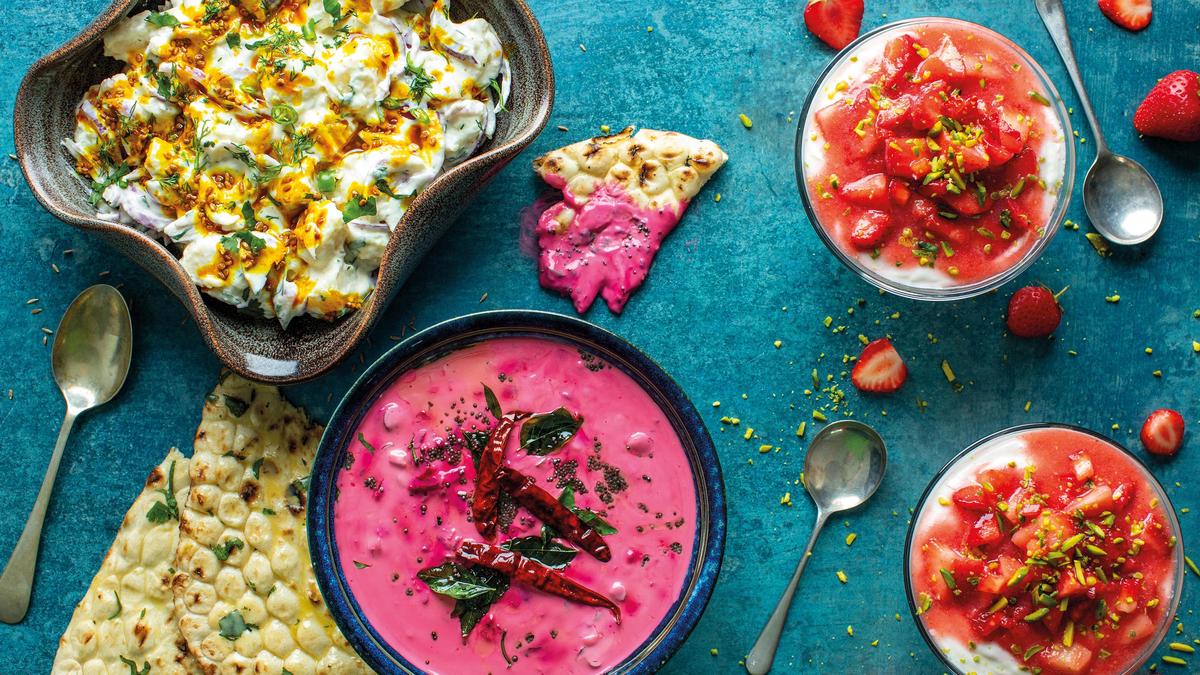
Radhika Howarth’s Flavours Without Borders spotlights 20 ingredients in three culinary styles
The Hindu
Flavours Without Borders by Radhika Howarth looks at 20 ingredients such as kidney beans, beetroot, and milk; and how migration has shaped them
The night before chef and digital content creator Radhika Howarth had to submit the final recipes going in her debut cookbook, Flavours Without Borders (Published by Meze Publishing), she found herself struggling to get a recipe right. “I wanted to include the Jamaican rice and bean dish, but even after two trials and checking different recipes, I wasn’t getting the proportions right,” London-based Radhika tells me over a call, adding how she did a “midnight swap” with the Kenyan maharagwe that she had read about in a book on African cuisine.
The traditional Kenyan cornmeal porridge is now part of over 80 recipes in the recently-launched Flavours Without Borders that has championed 20 ingredients such as yogurt, noodles, chicken, milk, cucumber and beetroot, each cooked in three different culinary styles.
Addressing the ingredient-first approach taken, Radhika says it was to “showcase the diversity and richness of each ingredient; how it adapts and evolves from one country and culture to another”. For example, the chickpea’s connection with India, Tunisia, and Spain has been explored through dishes like the Mangalorean chickpea ghassi, lablabi, and garbanzos con espinacas, respectively.
The idea for the book, she says, had been stewing for a while. “It was always part of the plan,” says the TV chef who has Punjabi, Bengali, and South Indian roots. “It was a visit to Gwalior to meet my family that kickstarted the journey, and my nephew nudged me. I wanted the book to focus on this fusion flavour journey,” says Radhika, adding that she spent eight months writing the book with primarily vegetarian recipes. “I’m a pescetarian, so I was biased” she laughs, “but when the publishers wanted a few meat-based dishes, I had my husband and nephew taste-test them.” “I was familiar with over 60% of the recipes as I had cooked them a lot. I had three trials for each dish.”
Research was a big part of putting it together, and Radhika relied on her collection of 300 cookbooks, and also studied historical trade routes such as the Silk Route, Spice Route, etc. Radhika started with 50-odd ingredients that had a story to tell, and then began finding their culinary roots and connections. “Many could not make the cut because I couldn’t establish their routes. Cauliflower, for instance, isn’t in the book as I tried hard to find its Parsi link but it did not materialise,” says the author, “There was a lot of virtual work involved.”
And in the process several “fun finds” came her way. “The curry powder trail was very fascinating to read about. It’s a British creation but we don’t use it as much in India although it’s seamlessly travelled to Japan and Vietnam,” says Radhika. Even the Moorish influence on food in southern Spain was something she was not aware of despite having travelled there often. “The slow cooking methods and use of spices like cumin were courtesy of the Arab influence in Spain,” she explains.
True to her Punjabi roots, Radhika’s top dish from the book is the rajma chawal, alongside several others. “The batata popre, and bunny chow were delightful finds, as were the Tunisian chickpeas, and the Indonesian mango salad. Some I like for the story, some for the taste!”





















 Run 3 Space | Play Space Running Game
Run 3 Space | Play Space Running Game Traffic Jam 3D | Online Racing Game
Traffic Jam 3D | Online Racing Game Duck Hunt | Play Old Classic Game
Duck Hunt | Play Old Classic Game











